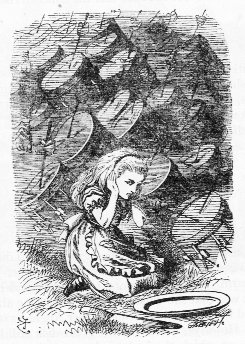|
THE D TABLET
Once again. Beyond the Point (Nash) at the Full Moon - evidently defining the date June 19 (*90, 170) - should reasonably come another season:
And from the order in the Sun calendar the opposite side of the year could immediately be found. It was simply a matter of adding 6 months. For instance should Canopus be visible close to the Full Moon in December 24 (Christmas Eve) half a year after the Day of St John:
... Taw, Tav or Taf is the twenty-second and last letter in many Semitic abjads ... In gematria Tav represents the number 400, the largest single number that can be represented without using the Sophit forms ... 'From Aleph to Taf' describes something from beginning to end; the Hebrew equivalent of the English 'From A to Z' ... Tav is the last letter of the Hebrew word emet, which means truth. The midrash explains that emet is made up of the first, middle, and last letters of the Hebrew alphabet (Aleph, Mem, and Tav...). Sheqer (falsehood), on the other hand, is made up of the 19th, 20th, and 21st (and penultimate) letters. Thus, truth is all-encompassing, while falsehood is narrow and deceiving. In Jewish mythology it was the word emet that was carved into the head of the Golem which ultimately gave it life. But when the letter 'aleph' was erased from the Golem's forehead, what was left was 'met' - dead. And so the Golem died ...
However, there were 365 days in the regular Gregorian calendar, not 4 * 91 = 364 = 12 * 29½ + 10.
... That the Sun-gods Dionysus, Apollo and Mithras were all also reputedly born at the Winter solstice is well known, and the Christian Church first fixed the Nativity feast of Jesus Christ at the same season, in the year A.D. 273. St. Chrysostom, a century later, said that the intention was that 'while the heathen were busied with their profane rites the Christians might perform their holy ones without disturbance', but justified the date as suitable for one who was 'the Sun of Righteousness' ... We can now recognize the stated year 273 AD as a hint pointing at *273 at Nash, because we remember AD 325 as a hint for the Julian spring equinox date 3-25: ... When Julius Caesar established his calendar in 45 BC he set March 25 as the spring equinox. Since a Julian year (365.25 days) is slightly longer than an actual year the calendar drifted with respect to the equinox, such that the equinox was occurring on about 21 March in AD 300 and by AD 1500 it had reached 11 March. This drift induced Pope Gregory XIII to create a modern Gregorian calendar. The Pope wanted to restore the edicts concerning the date of Easter of the Council of Nicaea of AD 325. (Incidentally, the date of Easter itself is fixed by an approximation of lunar cycles used in the Hebraic calendar, but according to the historian Bede the English name 'Easter' comes from a pagan celebration by the Germanic tribes of the vernal - spring - equinox.) So the shift in the date of the equinox that occurred between the 4th and the 16th centuries was annulled with the Gregorian calendar, but nothing was done for the first four centuries of the Julian calendar. The days of 29 February of the years AD 100, AD 200, AD 300, and the day created by the irregular application of leap years between the assassination of Caesar and the decree of Augustus re-arranging the calendar in AD 8, remained in effect. This moved the equinox four days earlier than in Caesar's time ...
|
||||||||||||||||||||||||||||||||||||||||||||||||||||||||||||||||||||||||||||||||||||||||||||||||||||||||||||||||||||||||||||||||||||||||||||||













